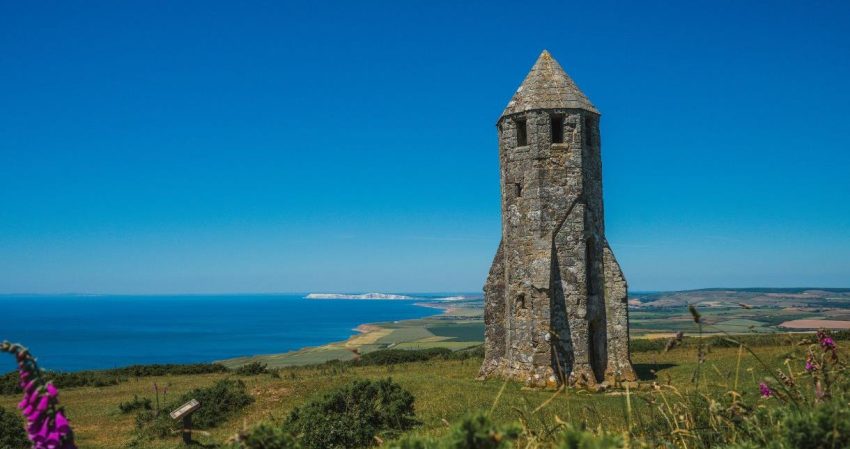The Isle of Wight, in the English Channel, has a millennia-old history. This beautiful island, known as the “Garden Isle” for its lush surroundings, showcases British history and culture. The Isle of Wight’s 700 square kilometers hide stories of early settlements, Roman occupation, Anglo-Saxon influence, Viking invasions, Norman conquests, Tudor intrigue, and Victorian luxury.
This blog article will reveal the Isle of Wight’s fascinating history, from ancient tribes to modern haven. Explore this island gem’s castles, forts, museums, and landscapes to uncover its vivid legacy that has left an unmistakable impression. The Isle of Wight awaits to reveal its historical secrets and stories.
Early Settlements and Roman Influence (c. 10,000 BC – 5th Century AD)
The Isle of Wight’s history begins with its early settlers, dating back to the Mesolithic period, around 10,000 BC. Archaeological findings suggest that ancient tribes made this island their home, drawn to its fertile land and proximity to the mainland. However, it was during the Roman era that the Isle of Wight truly came into historical prominence.
Roman influence began around 43 AD when the island was incorporated into the Roman province of Britannia. The Romans established settlements, roads, and fortifications on the island. Remnants of Roman villas, mosaics, and even a fort, known as Brading Roman Villa, can still be seen today, providing a tangible link to this bygone era.
Anglo-Saxon and Viking Periods (5th Century – 11th Century)
With the decline of Roman influence in the 5th century, the Isle of Wight became a haven for various tribes, including the Jutes and Saxons. This period saw the island’s transformation into a distinctly Anglo-Saxon society, complete with its own kings and culture. The Viking raids during the 8th and 9th centuries left their mark, further shaping the island’s identity.
Norman Conquest and Medieval Times (11th Century – 15th Century)
The Isle of Wight’s connection to the mainland continued to evolve over the centuries, particularly after the Norman Conquest of 1066. William the Conqueror granted the island to his trusted baron, William FitzOsbern, who built Carisbrooke Castle. The castle played a prominent role in the island’s history and was later famously associated with King Charles I during the English Civil War.
Throughout the medieval period, the Isle of Wight remained a strategic location, resulting in the construction of numerous castles and fortifications. These structures, such as Yarmouth Castle and the coastal defences known as the Solent Forts, remain standing as a testament to this era.
Tudor and Stuart Eras (16th Century – 17th Century)
The Tudor and Stuart eras brought significant changes to the Isle of Wight. Queen Elizabeth I established defensive forts on the island, anticipating threats from the Spanish Armada. During the English Civil War in the 17th century, the island played a pivotal role, serving as a stronghold for Parliamentarians against the Royalists.
Carisbrooke Castle once again entered the spotlight during this period, as King Charles I was imprisoned there before his execution. The castle’s famous donkeys, used to draw water from the well, remain an iconic symbol of the island’s heritage.
Victorian Splendor and Modern Times (18th Century – Present)
The Isle of Wight continued to evolve throughout the 18th and 19th centuries, becoming a popular destination for Victorian holidaymakers. Queen Victoria and Prince Albert frequently visited Osborne House, their summer residence on the island, which is now a museum open to the public.
In the 20th century, the Isle of Wight gained fame as the host of the iconic Isle of Wight Festival in 1970, featuring legendary musicians like Jimi Hendrix and The Who. This event left a lasting mark on the island’s cultural heritage.
Today, the Isle of Wight boasts a unique blend of historical sites, natural beauty, and cultural events. Visitors can explore its rich heritage at various museums, ancient churches, and historic landmarks, while also enjoying its stunning landscapes, including the famous Needles and beautiful beaches.
Conclusion
The rich tapestry of history and heritage on the Isle of Wight, as showcased on wightlink.co.uk, underscores the island’s enduring allure. Spanning from the days of its earliest settlers to its pivotal role in shaping English history, this picturesque gem invites visitors on a captivating journey through time within its 700 square kilometers.

